16th Jan 2009 - 14th Mar 2009
University Gallery

The University of Brighton’s exhibition, From Art School to University: Art and Design at Brighton 1859-2009, brings together work from artists and designers associated with the university to celebrate the founding of the original School of Art 150 years ago.
Linking with a publication, Art and Design at Brighton: 1859-2009: from Arts and Manufactures to the Creative and Cultural Industries, by Professor Jonathan Woodham and Dr Philippa Lyon, over 150 exhibits will be on display including drawings by Turner Prize winners Keith Tyson and work on paper by Antony Gormley, sculptor of the Angel of the North; a crystal-mesh couture dress by Julien MacDonald; sculpture by Turner Prize winner, Rachel Whiteread, whose ‘Monument’ occupied the empty plinth in Trafalgar Square; a self-portrait of Alison Lapper, widely known for posing for Marc Quinn’s statue, ‘Alison Lapper Pregnant’, that occupied the fourth plinth in Trafalgar Square; and prize-winning illustrations by author and illustrator, Emily Gravett.
 From Art School to University: Art and Design at Brighton 1859-2009
From Art School to University: Art and Design at Brighton 1859-2009 From Art School to University: Art and Design at Brighton 1859-2009
From Art School to University: Art and Design at Brighton 1859-2009The exhibits illustrate the collective contribution that the visual, creative and performing arts from Brighton’s staff, students and alumni have made to the wider community, with fashion, textiles, 3D, illustration, fine art, architecture, performance art and graphic design items.
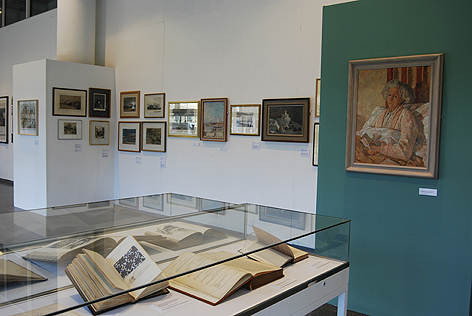 From Art School to University: Art and Design at Brighton 1859-2009
From Art School to University: Art and Design at Brighton 1859-2009 Works by Louis Ginnett. From Art School to University: Art and Design at Brighton 1859-2009
Works by Louis Ginnett. From Art School to University: Art and Design at Brighton 1859-2009The array of exhibits demonstrates the 150-year history with works by students in the late 19th Century, prospectuses from the Design Archives at the University of Brighton, through to the innovations of the 1900s, culminating in contemporary works from the 21st Century.
 North Gallery display including works by Alison Lapper and Andre Jackowski. From Art School to University: Art and Design at Brighton 1859-2009
North Gallery display including works by Alison Lapper and Andre Jackowski. From Art School to University: Art and Design at Brighton 1859-2009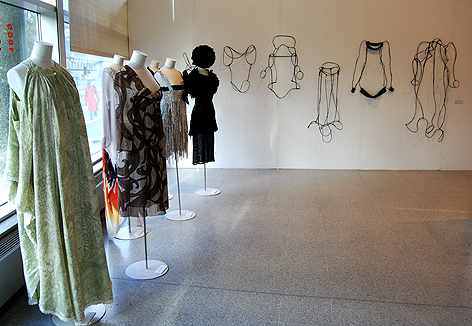 From Art School to University: Art and Design at Brighton 1859-2009
From Art School to University: Art and Design at Brighton 1859-2009Highlights include:
Works by Turner Prize winners, Antony Gormley, Keith Tyson and Rachel Whiteread
London Transport posters by Clive Gardiner and John Bellany
Watercolours by Dorothy Coke
Illustrations by John Vernon Lord, and Kate Greenaway Medal winners including Emily Gravett, Raymond Briggs and Quentin Blake
Photographs by Magnum photographer Mark Power
Garments by Jerwood Prize winner Caroline Broadhead, Mark Eley and Julien Macdonald
Stamp designs by Andrew Restall and Royal Designer for Industry George Hardie
Promotional material for Deep Purple, the Sex Pistols, Pink Floyd, Fat Boy Slim and Muse
Award-winning dance footage from Liz Aggiss, and Alice Fox’s 2008 Smudged performance at the Tate Modern
A model for 3D sustainable design by Duncan Baker Brown, who came to widespread popular prominence as the architect of ‘The House That Kevin McCloud Built’ for Grand Designs Live in May 2008.
Anne Boddington, Dean of the Faculty of Arts and Architecture, said: “This is a fantastic opportunity t0 celebrate the history of today’s multidisciplinary, international Faculty of Arts and Architecture. Reviewing the artistic achievements of staff and students demonstrates the development of this vibrant creative educational institution.”
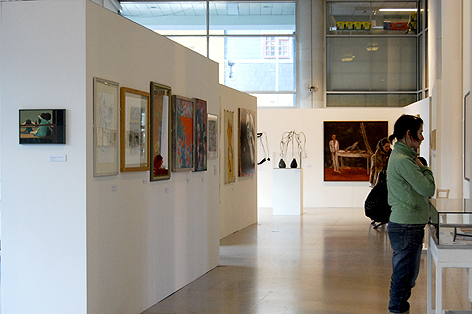 From Art School to University: Art and Design at Brighton 1859-2009
From Art School to University: Art and Design at Brighton 1859-2009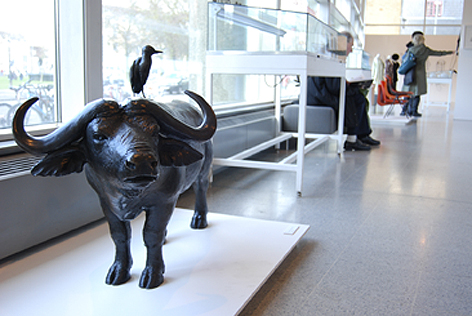 North Gallery including sculpture by Alma Boyes. From Art School to University: Art and Design at Brighton 1859-2009
North Gallery including sculpture by Alma Boyes. From Art School to University: Art and Design at Brighton 1859-2009The exhibition starts with images and artefacts from the beginnings of the Brighton School of Art. Doors first opened to more than 50 students on 17 January 1859 in a room off the kitchens of the Royal Pavilion. Events leading to the school’s development are examined such as the establishment in 1835 of a parliamentary select committee on arts and manufactures to investigate underlying causes for deficiencies in the public’s taste and British manufacturers’ increasing difficulties in competing in terms of design in the international marketplace.
1900 to 1930 saw the school forging links with industry and enjoying national success through its showing at the international 1925 Paris Exposition des Arts Décoratifs et Industriels Modernes. It gained more awards than any other institution outside London and swept up 22 per cent of those made to provincial art schools.
 Exhibition enstrance. From Art School to University: Art and Design at Brighton 1859-2009
Exhibition enstrance. From Art School to University: Art and Design at Brighton 1859-2009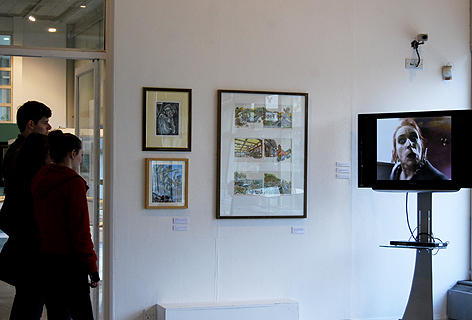 North Gallery including video work by Liz Aggiss. From Art School to University: Art and Design at Brighton 1859-2009
North Gallery including video work by Liz Aggiss. From Art School to University: Art and Design at Brighton 1859-2009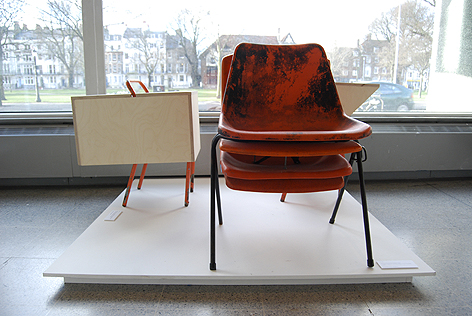 North Gallery display including design research by Maxine Naylor. From Art School to University: Art and Design at Brighton 1859-2009
North Gallery display including design research by Maxine Naylor. From Art School to University: Art and Design at Brighton 1859-2009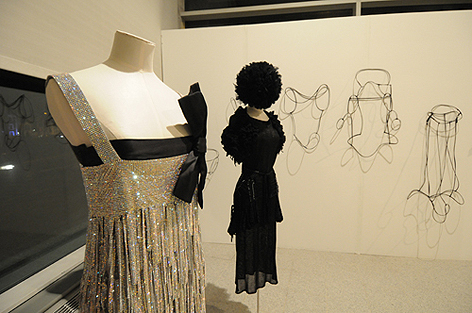 Crystal-mesh couture dress by Julien MacDonald. From Art School to University: Art and Design at Brighton 1859-2009
Crystal-mesh couture dress by Julien MacDonald. From Art School to University: Art and Design at Brighton 1859-2009Fine artists Charles Knight and Louis Ginnett came to prominence in the interwar years. Both taught painting classes in Ditchling, home to the world-renowned arts and crafts community. The exhibition includes items from Ditchling notables Ethel Mairet who taught weaving, dyeing and spinning and was part of the Department of Women’s Crafts established at the School in 1938, and illustrator John Vernon Lord, Professor Emeritus of the University of Brighton.
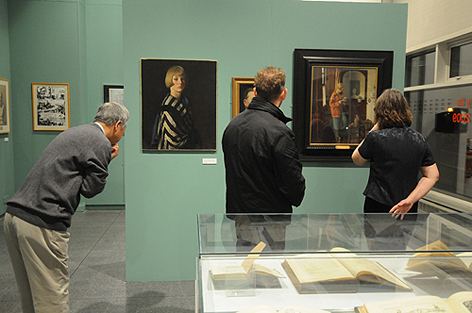 South Gallery including works by Louis Ginnett. From Art School to University: Art and Design at Brighton 1859-2009
South Gallery including works by Louis Ginnett. From Art School to University: Art and Design at Brighton 1859-2009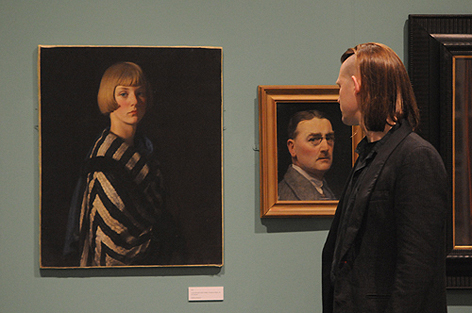 Old and new: textile researcher Dr Patrick Dyer confronts works by Louis Ginnett. From Art School to University: Art and Design at Brighton 1859-2009
Old and new: textile researcher Dr Patrick Dyer confronts works by Louis Ginnett. From Art School to University: Art and Design at Brighton 1859-2009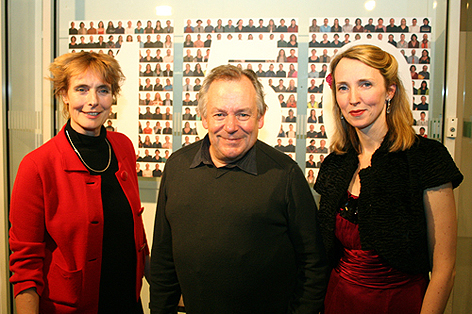 (from left) Dean of Faculty Anne Boddington, Professor Jonathan Woodham, editor and curator, Dr Philippa Lyon, editor. From Art School to University: Art and Design at Brighton 1859-2009
(from left) Dean of Faculty Anne Boddington, Professor Jonathan Woodham, editor and curator, Dr Philippa Lyon, editor. From Art School to University: Art and Design at Brighton 1859-2009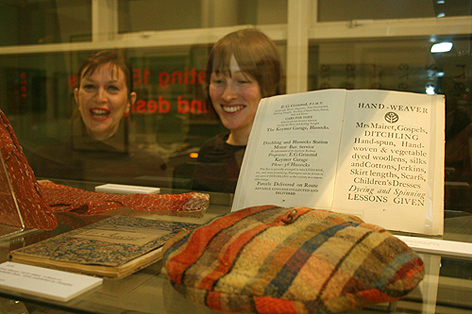 Display cabinets, typography and book arts. From Art School to University: Art and Design at Brighton 1859-2009
Display cabinets, typography and book arts. From Art School to University: Art and Design at Brighton 1859-2009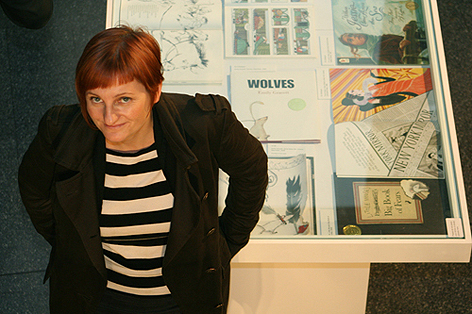 Author and illustrator Emily Gravett. From Art School to University: Art and Design at Brighton 1859-2009
Author and illustrator Emily Gravett. From Art School to University: Art and Design at Brighton 1859-2009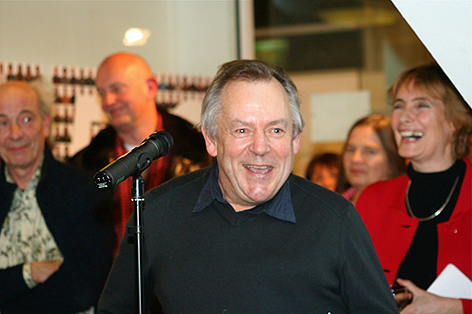 Curator, organiser and editor Professor Jonathan Woodham. From Art School to University: Art and Design at Brighton 1859-2009
Curator, organiser and editor Professor Jonathan Woodham. From Art School to University: Art and Design at Brighton 1859-2009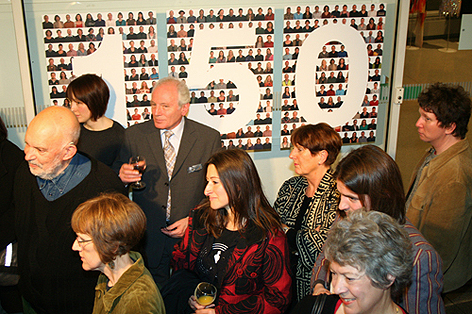 The 150th wall display, composed of portraits of all members of the Faculty.
The 150th wall display, composed of portraits of all members of the Faculty.Brighton has produced many distinguished illustrators over the past century. The tradition goes back to Philip Hagreen, a founder of the Society of Wood Engravers and has continued through Cyril Hodges, John Lawrence, Raymond Briggs, John Vernon Lord and Emily Gravett. It is a mark of Brighton’s standing in the field that since 2000, five of the seven winners of the prestigious Kate Greenaway Medal have been Brighton-trained.
Classic images associated with rock and pop have been created by Brighton’s staff and students. Examples include John Vernon Lord’s cover for Deep Purple’s The Book of Taliesyn (1968) and George Hardie’s designs for many iconic record sleeves, including Led Zeppelin (1968)andPink Floyd’s Dark Side of the Moon (1973). Hamish Makgill art-directed the cover for Fatboy Slim’s You’ve Come a Long Way, Baby (1998), Paul Burgess the Sex Pistols Box Set (SEXBOX1, 2002), Martin Andersen a series of covers for July Skies, and Jasper Goodall the cover for Muse’s Invincible (2007).
Change continued with the establishment of Brighton Polytechnic in the 1970s, followed by University status in 1992. In the new millennium, Architecture was welcomed back into the newly designated Faculty of Arts and Architecture, and the three multidisciplinary schools we see today were created: Arts and Communications, Architecture and Design, Historical and Critical Studies. The exhibition ends with screenings of graduate fashion shows and performance art. The fashion and textiles courses have graduated household names including Julien Macdonald, Mark Eley and Biba legend, Barbara Hulanicki.
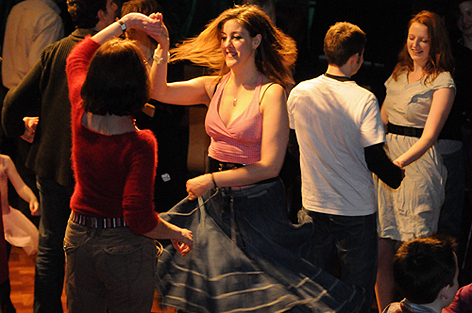 Staff celebrate the 150th anniversary of arts education in Brighton with an evening of events and entertainment
Staff celebrate the 150th anniversary of arts education in Brighton with an evening of events and entertainment Staff celebrate the 150th anniversary of arts education in Brighton with an evening of events and entertainment
Staff celebrate the 150th anniversary of arts education in Brighton with an evening of events and entertainment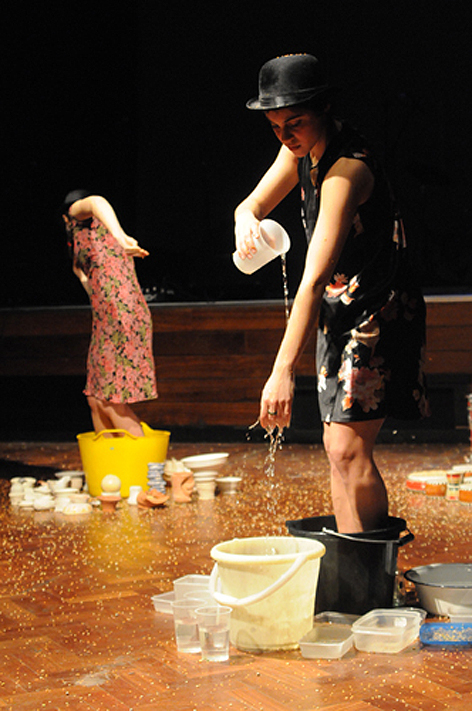 Staff celebrate the 150th anniversary of arts education in Brighton with an evening of events and entertainment
Staff celebrate the 150th anniversary of arts education in Brighton with an evening of events and entertainment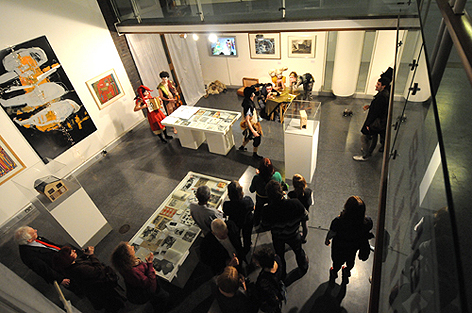 Staff celebrate the 150th anniversary of arts education in Brighton with an evening of events and entertainment
Staff celebrate the 150th anniversary of arts education in Brighton with an evening of events and entertainment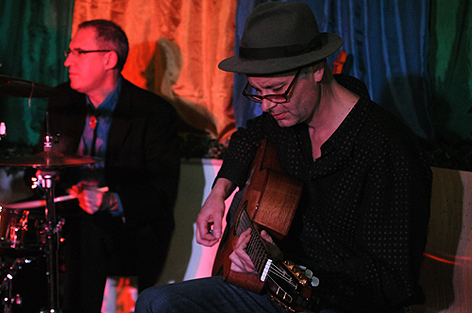 Staff celebrate the 150th anniversary of arts education in Brighton with an evening of events and entertainment
Staff celebrate the 150th anniversary of arts education in Brighton with an evening of events and entertainment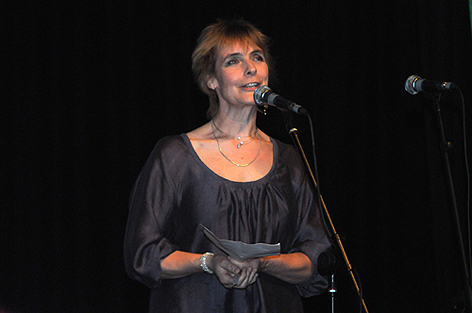 Address by Dean of Faculty Anne Boddington as staff celebrate the 150th anniversary of arts education in Brighton with an evening of events and entertainment
Address by Dean of Faculty Anne Boddington as staff celebrate the 150th anniversary of arts education in Brighton with an evening of events and entertainment Staff celebrate the 150th anniversary of arts education in Brighton with an evening of events and entertainment
Staff celebrate the 150th anniversary of arts education in Brighton with an evening of events and entertainment Staff celebrate the 150th anniversary of arts education in Brighton with an evening of events and entertainment
Staff celebrate the 150th anniversary of arts education in Brighton with an evening of events and entertainment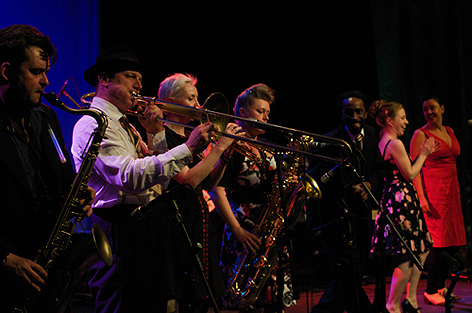 Staff celebrate the 150th anniversary of arts education in Brighton with an evening of events and entertainment
Staff celebrate the 150th anniversary of arts education in Brighton with an evening of events and entertainmentThe exhibition’s curator is Professor Jonathan M Woodham, Director for the Centre for Research and Development, Faculty of Arts and Architecture, University of Brighton.
An accompanying book and catalogue - Art and Design at Brighton 1859-2009: from Arts Manufactures to the Creative and Cultural Industries - has been published by the University of Brighton and will be on sale from the University of Brighton Gallery.
Lenders include the Brighton Museum and Art Gallery, Ditchling Museum, London Transport Museum and the Aldrich Collection, as well as many individuals.
Supporters include the University of Brighton and the Aldrich family.
Burt Brill and Cardens (www.bbc-law.co.uk) also support the degree shows of the Faculty’s creative community of students.
The Faculty of Arts and Architecture would like to get in touch with any lost alumni.